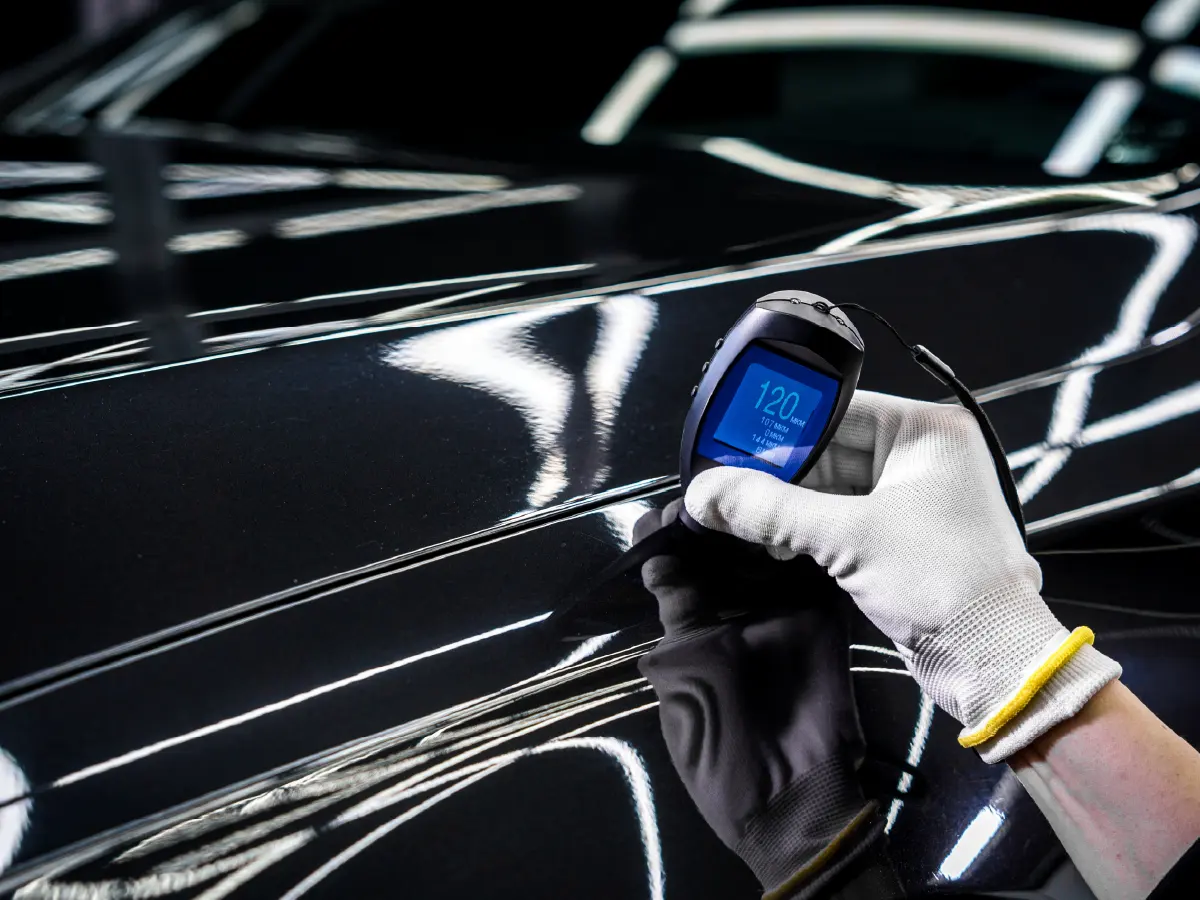

What Does the Paint Thickness Say About a Car? How PDI Detects Repainted Panels
- 1A car’s paint thickness reveals hidden damage or repainted body panels
- 2Factory paint is uniform; thus, inconsistent layers signal past repairs
- 3PDI with a paint thickness gauge adds trust to your used car buying experience
When you’re buying a used car, it’s natural to focus on the price, model, mileage, and how clean it looks. But there’s one more detail that often slips under the radar, and it is the paint thickness. It may sound like a minor thing, but it can actually reveal a lot about the car’s past.
This is where a proper Pre-Delivery Inspection (PDI), especially with a paint thickness meter, makes all the difference. Let’s explore how checking paint thickness helps uncover hidden truths and why it’s becoming a must-have step during vehicle inspections.

What is Paint Thickness and Why Does it Matter?
Paint thickness simply refers to how thick the layers of paint are on a car's surface. Every vehicle that rolls out of a factory has a standard thickness of paint. The paint thickness, which lies between 100 and 180 microns, is governed by the manufacturer for a particular car model. That includes the base coat, colour coat, and clear coat. It’s uniform across all panels unless something unusual has happened.
So, what happens when one panel shows a paint thickness of 300 or even 500 microns? That’s a red flag. It usually means that a section has been repainted, possibly due to an accident or damage. And while a repaint isn’t always a deal-breaker, it’s definitely something you’d want to know about before making a purchase.
What Does an Uneven Paint Reading Indicate?
During a PDI, trained inspectors use a paint thickness gauge to measure the coating on each panel. This device uses magnetic or ultrasonic methods to determine the thickness of the painted layer and provides readings in microns.
If most panels show a uniform reading, for example, 120 microns, but one door suddenly reads 350 microns, it clearly indicates repainting. And that usually raises one big question: why was it repainted?
The particular panel could be repainted due to:
- A minor scratch or cosmetic repair
- A dent or deeper impact
- Previous accident damage
- Rust treatment under the surface
This kind of information gives you clarity and confidence in your used car purchase. You’re no longer relying solely on the seller’s word or a visual check. The gauge gives you measurable proof.
Repainting is Normal, But Transparency is the Key
Let’s say the car you're considering has a freshly painted bumper. It might just be a touch-up to fix scratches from parking. That’s fine. But if the bonnet, side fender, and one door show thick paint, it could mean more serious work was done.
The problem isn’t repainting itself. It’s when sellers try to pass off a damaged car as completely accident-free and demand a higher price. Paint thickness readings help you see past the polish and get a clearer picture of what the vehicle has actually been through.
Factory Paint Finish vs. Body Shop Touch-Up
Factory paint jobs are done in a clean, controlled environment using robotic arms and ovens that cure the paint. That’s why they’re so uniform.
Body shop repaints, on the other hand, are manual. Even the best painter can’t always match the factory finish perfectly. Paint thickness meters help detect these inconsistencies by measuring layers that may be too thick or applied unevenly.
Why PDI with Paint Thickness Check is Essential
Cars are now designed to hide imperfections quite well. A badly repaired panel may still look clean and polished to the naked eye. But beneath the surface, there could be body filler or panel replacement.
When you get a PDI from a professional inspection service or marketplace like CARS24, these checks are often included. Paint thickness measurement helps validate claims made by the seller, especially if they promise “no accident history.”
At CARS24, each car listed for resale goes through a rigorous inspection. Our experts use paint thickness meters to spot inconsistencies, helping you avoid surprises later.
What Should Buyers and Sellers Keep in Mind?
If you’re a buyer, always ask if the car has been repainted. If the answer is “yes,” find out why. Use the paint readings to your advantage during negotiations.
If you’re a seller, it’s better to be upfront about any past repairs or paintwork. Buyers are more likely to trust you when you’re honest, and a car that’s been repaired well and maintained properly can still fetch a good price.
Final Thoughts
Paint thickness is like a silent storyteller. It doesn’t speak out loud, but with the right tools, you can read everything it has to say. Whether it’s a minor scratch or signs of a major repair, measuring paint thickness during a PDI adds another layer of trust to your buying or selling journey.
So, next time you’re considering a used car, don’t just look at the polish and shine. Ask for the paint readings. They might just save you from an expensive surprise, or help you land a better deal.
And if you want a car that’s been fully checked, verified, and transparent in its history, platforms like CARS24 can make the entire experience smoother and smarter.
Frequently Asked Questions
Expand all





















